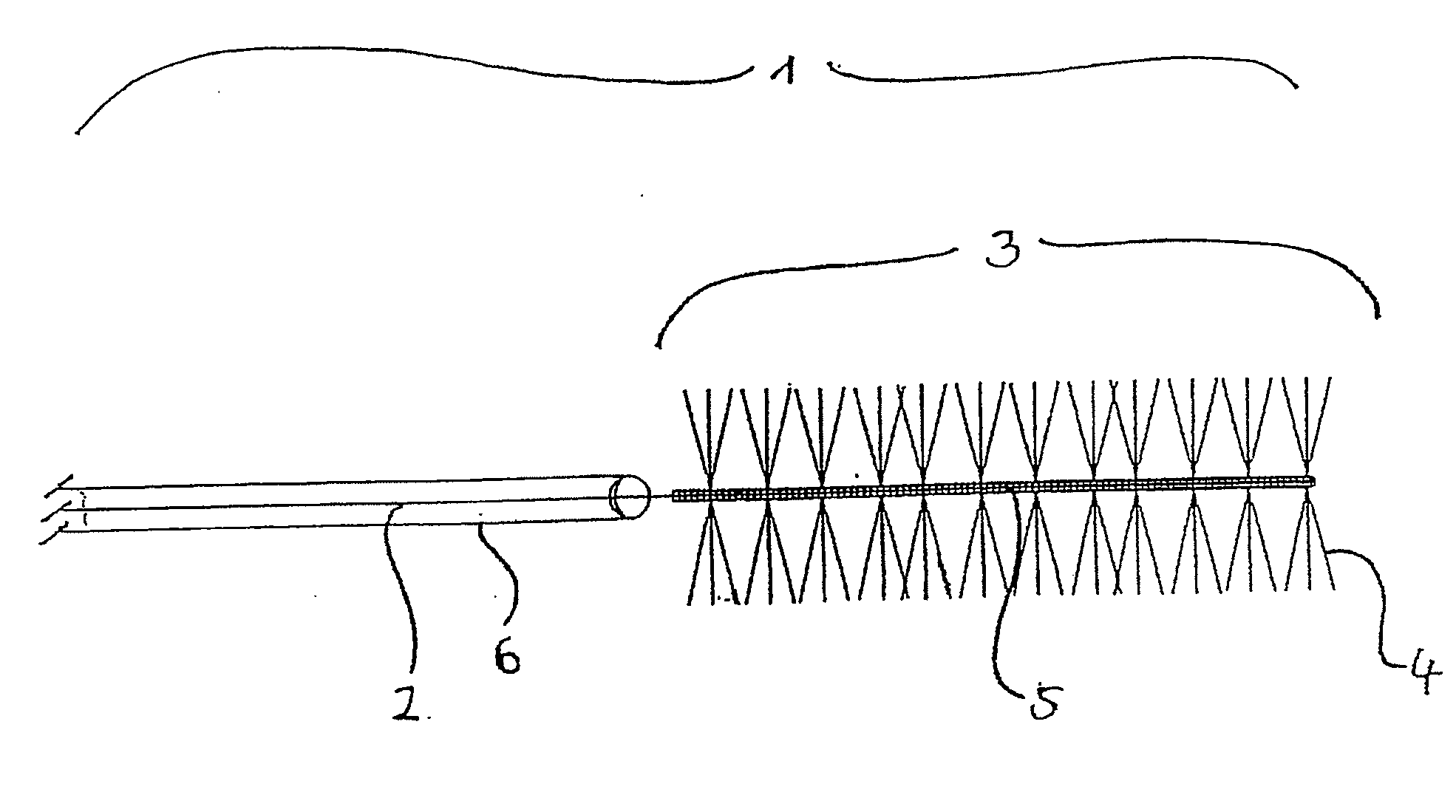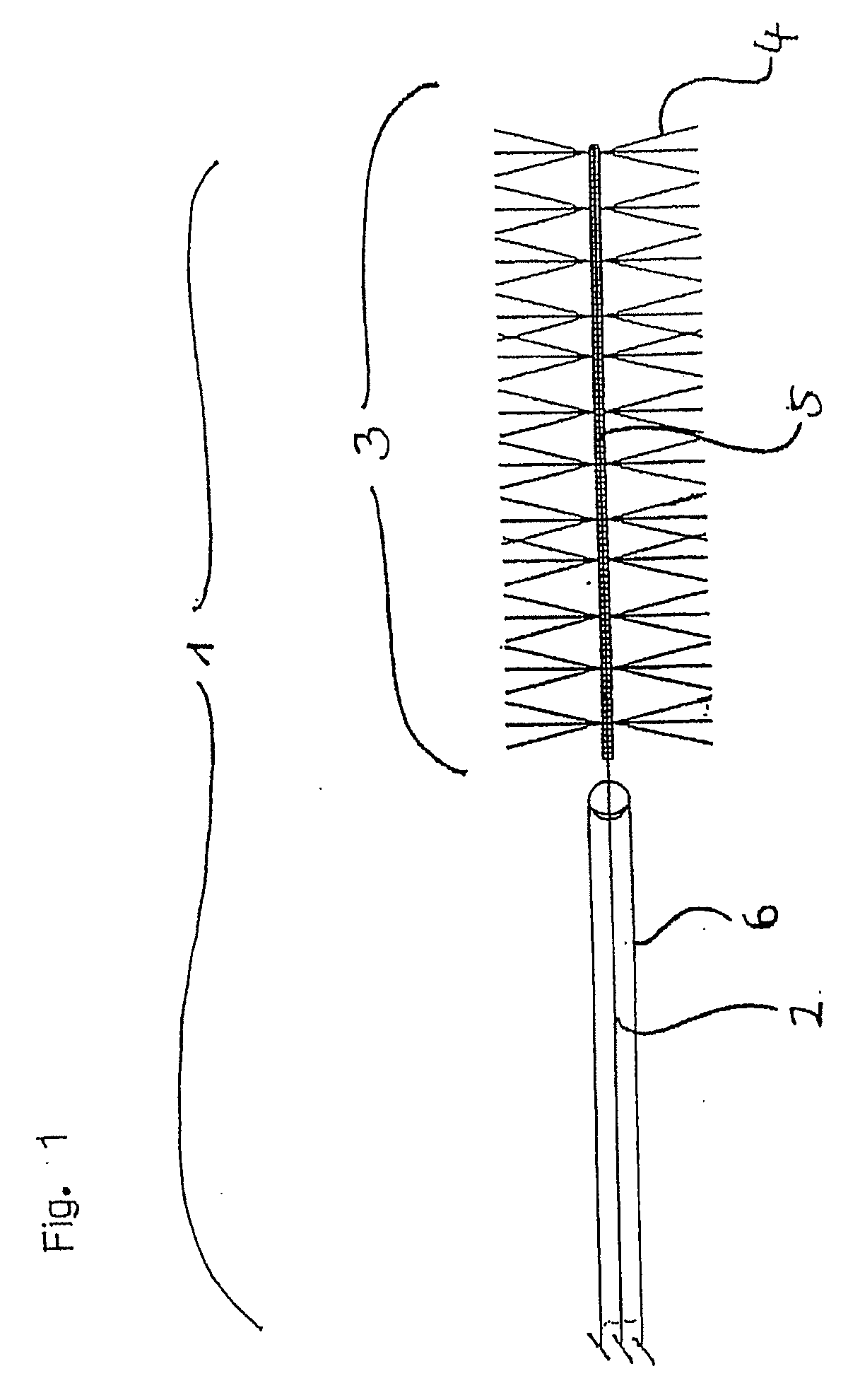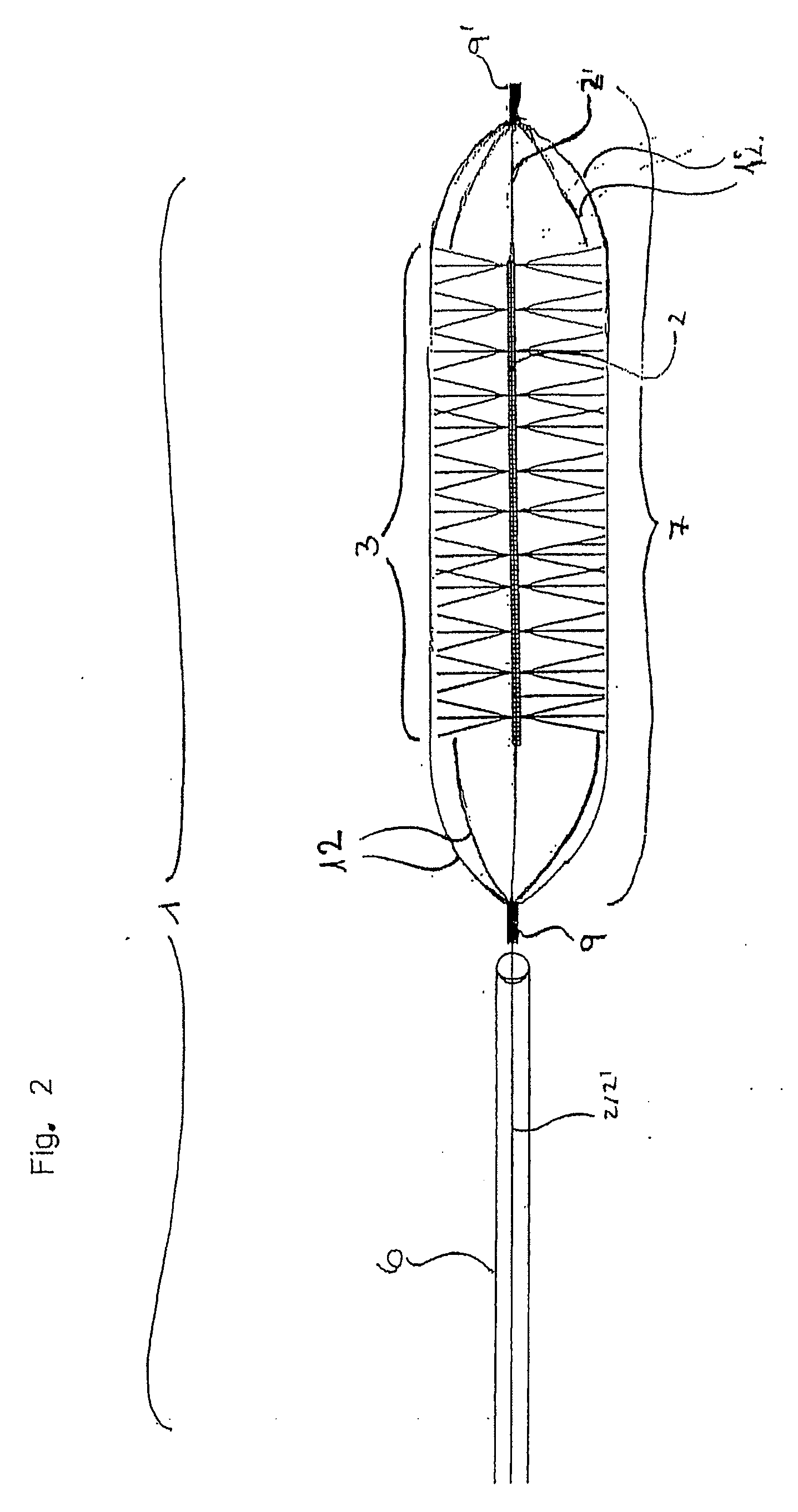Device for the Removal of Thrombi
a technology for removing thrombosis and thrombosis, which is applied in the field of devices for removing thrombosis, can solve the problems of destroying relevant tissue, interrupting the supply of oxygen and nutrients to the associated tissue, and affecting the function of the associated tissue,
- Summary
- Abstract
- Description
- Claims
- Application Information
AI Technical Summary
Benefits of technology
Problems solved by technology
Method used
Image
Examples
Embodiment Construction
[0072] The inventive device 1 shown in FIG. 1 is provided at the distal end of the guide wire 2 made of nitinol and having a diameter of 0.254 mm with functional unit 3 intended for the retrieval of thrombi. Functional unit 3 is provided with polyamide bristles 4 having a length of 2 mm and being attached radially onto guide wire 2. The diameter of functional unit 3 is thus 4 mm and is particularly suited for the retrieval of thrombi out of vessels having an inner diameter ranging approx. between 4.5 and 5 mm. In the area where the bristles are situated guide wire 2 is designed as a platinum micro-coil 5; this embodiment is especially flexible and at the same time serves as radiopaque marker to enable the placement to be performed under radiographic observance. The distal tip of the micro-coil has been rounded off to render it particularly atraumatic. Bristles 4 are mechanically clamped into the coil with one fiber each forming two bristles 4, having a length slightly more than doub...
PUM
 Login to View More
Login to View More Abstract
Description
Claims
Application Information
 Login to View More
Login to View More - R&D
- Intellectual Property
- Life Sciences
- Materials
- Tech Scout
- Unparalleled Data Quality
- Higher Quality Content
- 60% Fewer Hallucinations
Browse by: Latest US Patents, China's latest patents, Technical Efficacy Thesaurus, Application Domain, Technology Topic, Popular Technical Reports.
© 2025 PatSnap. All rights reserved.Legal|Privacy policy|Modern Slavery Act Transparency Statement|Sitemap|About US| Contact US: help@patsnap.com



